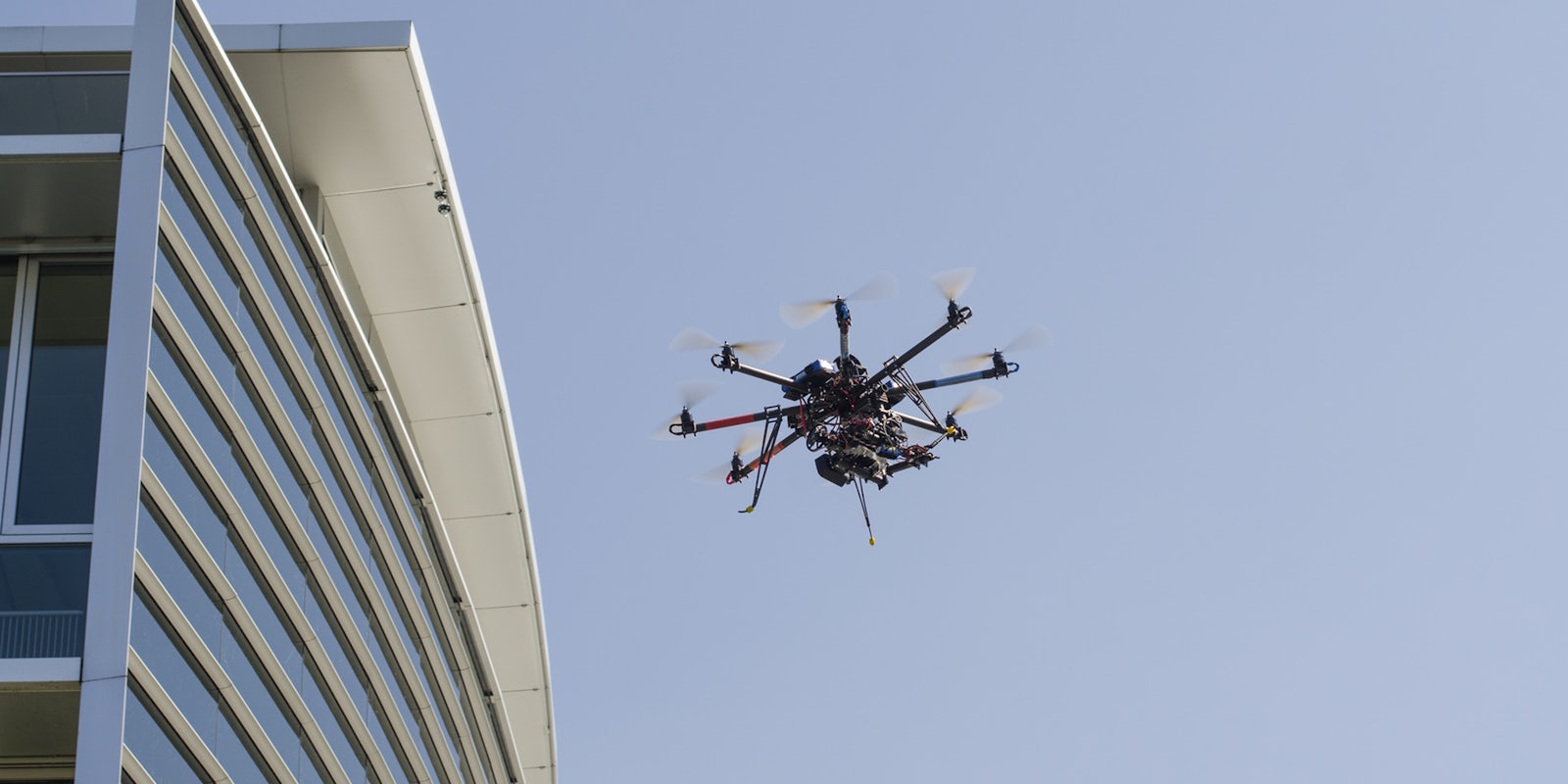One of the biggest drone-related challenges facing the government right now is the daunting task of keeping the skies safe and clear as more and more people and companies receive licenses to fly the small craft. NASA and Verizon Wireless might have come up with a solution to the problem that relies on the most ubiquitous of all communications infrastructure: the cell tower.
The Guardian has obtained documents showing that Verizon, the nation’s largest wireless carrier, signed an agreement with NASA in 2014 to test tracking technology that can pinpoint where a drone is based on the company’s cell towers.
NASA’s Ames Research Center in Mountain View, California, is coordinating the project, which costs $500,000, according to the leaked documents.
“NASA is planning the first tests of an air traffic control system for drones there this summer,” the Guardian says, “with Verizon scheduled to introduce a concept for using cell coverage for data, navigation, surveillance and tracking of drones by 2017.”
The cell-tower-based tracking network will likely require drones to be connected to the Internet in flight so that they can access route information, including weather alerts and restricted airspace warnings.
The rise of drones has complicated the existing problem of how to better regulate America’s crowded skies. Congressional Republicans are proposing reforms to the country’s air-traffic control system that would privatize air-traffic controllers’ jobs. The Federal Aviation Administration, which oversees the controllers, has faced numerous budget difficulties in the past several years.
Drone experts believe that it is impossible to track America’s expanding private drone fleet in the same way that the FAA tracks commercial aircraft.
“We really cannot add any more capacity to the regular air traffic control system,” Duke University aeronautics professor Missy Cummings told the Guardian. “Radar coverage at low altitude is very spotty, and we don’t have the technology or the people to put a tracking device on each drone.”
Meanwhile, the FAA still has not finalized regulations on the private use of drones, although it has given companies like Amazon special exemptions from its interim regulations that permit expanded testing.
Because the NASA–Verizon project does not have FAA approval, it is described as “exploratory” in nature. In addition to cell towers, NASA is also considering using orbiting satellites to track drones.
Photo via Gabriel Garcia Marengo/Flickr (CC BY 2.0)


